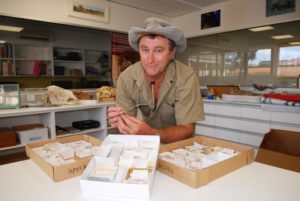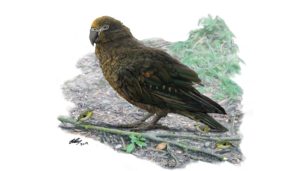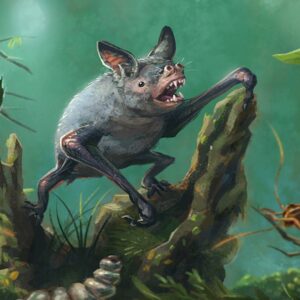
Forget the kiwi or moa, kākāpō are the true native of New Zealand. Aotearoa's true ancient species are animals like kākāpō, small wrens, bats and freshwater limpets, not more recent 'immigrants' like kiwi, moa and takahē.

This is the conclusion reached by an international team of palaeontologists, including Flinders University's Associate Professor Trevor Worthy, after two decades of exhaustive research at the St Bathans fossil site in Central Otago, South Island, NZ.
The findings, published in Geobios, result from close examination of thousands of fossil bones and 9,000 specimens from about 20 million years ago, by dedicated scientists such as Canterbury Museum's Dr Paul Scofield and Dr Worthy from Flinders University's Palaeontology Laboratory.
This period was long after Zealandia split from Australia about 80-60 million years ago, but well before the significant cold periods of the ice ages.
"The research shows that many of the species that we thought of as iconic New Zealand natives - a classic example would be the takahē - are relatively recent blow-ins from Australia, arriving only a few million years ago,'' says Associate Professor Worthy. "What we are seeing from 20 million years ago is that very few of the birds and other vertebrates are closely related to any Australian taxa."
While the takahē is clearly an 'Aussie blow-in,' the kiwi likely 'blew' in from Antarctica 50-60 Ma ago and its closest relative is the elephant birds of Madagascar," he says. "The moa are a bit older in Zealandia but are most related to the South American tinamous."

"Twenty-three years of digging at St Bathans has changed our idea about the age of the New Zealand fauna and the importance of some animals over others," says Dr Scofield, the Senior Curator Natural History at Canterbury Museum. "For example, until now we thought that birds like kiwi and moa were among the oldest representatives of New Zealand fauna.
"We are now realising that the kākāpō, tiny New Zealand wrens and bats, and even a bizarre freshwater limpet, are the real ancient New Zealand natives."
The research concludes that this menagerie of exotic animals was wiped out by dramatic temperature drops over the last about 5 million years.
Exotic creatures identified at the site include a giant parrot that the scientists nicknamed 'Squawkzilla', two mystery mammals, flamingos, a 3-metre crocodile, a giant horned turtle and a giant bat.
First author on the paper, New Zealander and Flinders University Associate Professor Worthy, says the reimagining of NZ's native fauna was made possible by the significant fossils of non-marine wildlife found near St Bathans in the bed of a large prehistoric lake.

"Our 23 years of research at St Bathans has transformed our understanding of how non-marine vertebrate life in New Zealand looked around 20 million years ago during the Early Miocene era," says Professor Worthy, from the College of Science and Engineering at Flinders University.
"Every year we find new specimens. Finds that reveal amazing new species that we couldn't have imagined when we first started working there.
"It's exciting to be involved in a project that continues to make absolutely fresh discoveries about what animals lived in New Zealand's lakes and rivers, and the forests around them, during this critical period in history. "
The latest research paper was a collaboration between Flinders University, Canterbury Museum, Te Whare Wānanga o Waitaha University of Canterbury, The University of Queensland, University of Copenhagen and University of New South Wales.
Study co-author Dr Vanesa De Pietri, from the University of Canterbury, says the animals that lived in New Zealand 20 million years ago were very different to what we have now.
"For example, we had another giant eagle that was not related to Haast's Eagle. We had a whole bunch of songbirds that were quite different, crocodiles and even potentially a small mammal that we've nicknamed the waddling mouse. We are still in the middle of our research into understanding exactly what that was," she says.
The article, A synopsis of the Early Miocene St Bathans Fauna from New Zealand (2024) by Trevor H Worthy, R Paul Scofield, Vanesa De Pietri, Steven W Salisbury, Werner Schwarzhans, Suzanne J Hand and Michael Archer has been published in Geobios DOI: 10.1016/j.geobios.2024.03.002.






